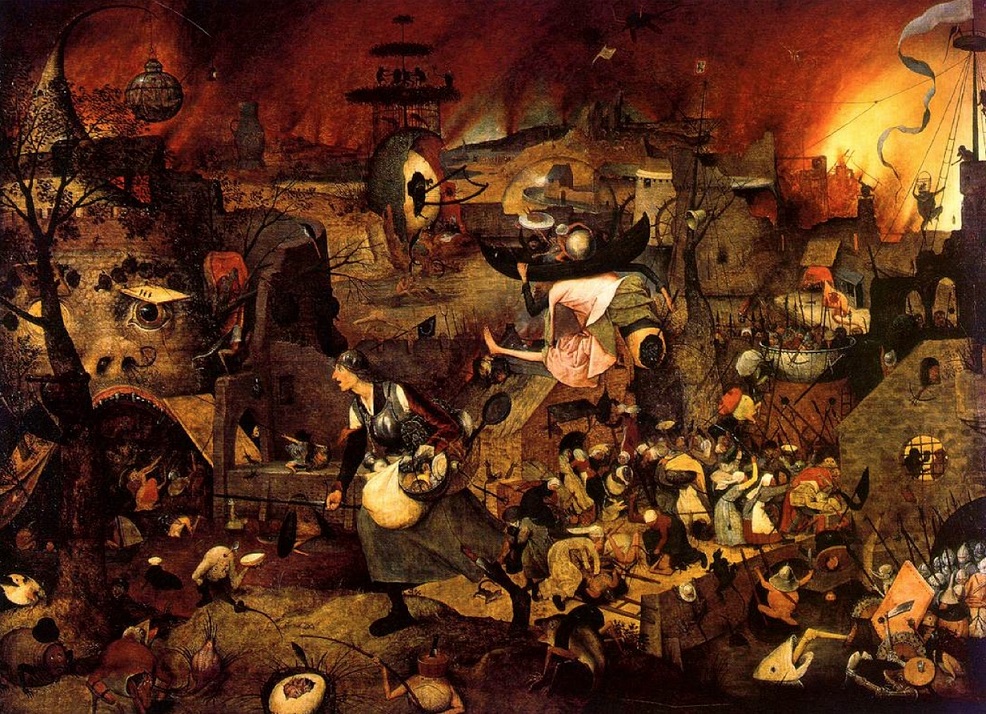There is a long tradition of associating disorder with unruliness and deformation in western philosophy, literature and aesthetics, from Hesiod to John Milton, from Aristotle to Ernst Gombrich. Perception, too, is ordered in semantic, spatial, and temporal terms. A situation is ‘legible’ when we can see a pattern in it or replace a sequence of events – an enumeration of colours, animals or vehicles, for example – by a rule shorter than itself: the categories ‘colour’, ‘animal’ or ‘vehicle’. When there is no rule which captures the formation of content, the sequence remains obscure or incomprehensible.
Spatially, we associate order with positioning, direction, plane, and surveyability. When objects appear in unexpected places – when another door appears behind a door thought to lead outside – the effect is disorientating. Temporally, order manifests in a steady ‘flow’ of time. When things jump phases, move at unexpected tempi or in an unexpected temporal direction – when a rosebud withers in a day – the effect is unsettling. In the social realm, ‘disorder’ marks the breakdown of the shared symbolic universe. Despite cultural differences, there is a clear sense of the line that must be drawn between ‘acceptable’ micro-violence, anarchy, chaos and carnage.
And yet, recent years have seen repeated irruptions of disorder at the geographic, biological, psychological, economic and demographic level. Disorder has become synonymous with unaccountable ruptures, hyperbolic growth, the exhaustion of natural and cultural reserves, and the viral spreading of noxious agents. Grand-scale disorder is seen as a permanent threat. The coupling of mayhem with excess and a derailed escalation of disastrous events is a well-known, often revisited Renaissance trope dating back to Greek antiquity. Think of Breughel’s 1563 Dulle Griet, or the tempestuous speed with which Euripides’s Medea moves from finding out about her husband’s intention to marry another to killing their children, cooking them, and serving them to Jason to eat. But there is also an entirely new brand of disorder, concurrent with the rise of the risk society, the culture of fear, and the AI ‘conception’ of anomaly.
Risk society claims that no hazards can be attributed to external factors but are a direct result of human decisions. The culture of fear cultivates the tendency to catastrophise through, for example, disaster modelling and fake news. Every so often a drone opens fire on innocent civilians because it mistook their umbrellas for guns. In this constellation, where instability meets volatility, acceleration, human and machinic error, difference is often perceived as anomaly, anomaly as disorder, and disorder as impending catastrophe. If assumptions of order and predictability are our default position, how able are we to resist the ‘tragic’ impulse, understand or respond to the turbulence and instability that characterise our times and our increasingly interlinked worlds? To begin with, doesn’t the disqualifying ‘dis’ – which is the same in the equally problematic word ‘disability’ – compress an entire spectrum of possibilities and abilities into a simplistic, and, ultimately, not so productive notion? How might we think instability and turbulence differently, not in scientific terms, but in everyday life?
– Natasha Lushetich
